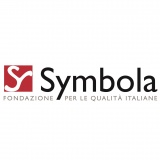
 Fondazione Symbola
Fondazione Symbola
Italian report: 100 Italian circular economy stories 2021
- WTI Magazine #147 Jan 22, 2022
-

 Fondazione Symbola
Fondazione Symbola
There is nothing new about the idea of a circular approach in the use of resources. Circularity is the strategy that nature and the human species, since its appearance on Earth, have refined to efficiently manage scarce resources.
It is the strategy that Italy, historically poor in raw materials, has smartly adopted to find materials, to produce – to quote Carlo Maria Cipolla - in the shade of bell towers, beautiful things that the world likes: the rags of Prato, the metal scrap in Brescia, the paper mills in Lucca; there are numerous practices rooted in the territories that form the background of the Italian circular economy.
This also explains, as certified by Eurostat, Italy's leadership in waste recycling (79.4% of total municipal and special waste), a figure that exceeds the EU average (49%) being well above that of the Big European Countries (France 66%, Germany 69%). Waste sent to be recycled (117 million tons), that is used as material in the building/infrastructure sector (50% equal to 59 million tons) and in the manufacturing industry (33% equal to 39 million tons).
Thanks to this material component originating from the national waste cycle, to which we can add materials coming from the internal recovery of industries and the imported ones, the Italian industry reaches a circularity rate (ratio between secondary materials from recycling and total materials used - primary raw materials and secondary materials -) of about 50%.
Moreover, with 270.5 tons of materials used per million euro produced, a figure almost halved compared to ten years ago and much lower than that of Germany (333.9), we are the most efficient among the Big European Union Countries in terms of material consumption. These are significant results that have to be further improved by opening new frontiers and moving in the direction indicated by COP26.
Behind these results there is a nation made up of companies, research centres and associations that is constantly active in order to reduce waste and pollution in production processes, research and design products that are durable, reusable, repairable or recyclable, searching for a new synthesis between beauty and sustainability. A continuously evolving panorama that Symbola and Enel narrated in 2018 and that, with this edition of 100 Italian stories, also in collaboration with Sant'Anna School of Advanced Studies of Pisa, they have decided to update.
The hundred stories collected, without any claim to completeness, narrate a Made in Italy that looks at quality and innovation in a circular way: from the agri-food sector to fashion, from packaging to mechanics, from wood furniture to construction and finance, intersecting electronics and chemistry. The search for material and energy efficiency is common to most of the companies surveyed, an aspect that has direct effects on costs, productivity and therefore competition. There are many solutions aimed at preserving the quality of materials at the end of the product life cycle and those that use renewable inputs originating from recovery and recycling processes. However, innovation is present from the early design phases, with eco-design approaches aimed at extending the useful life of products, envisioning new consumption models such as sharing and servitization. All these business models are supported by the opportunity given by the circular economy to interconnect supply chains in a process of industrial symbiosis, where the waste of a company or an industry becomes raw material for another. A strategy that, if we consider the industrial districts, is already part of Italy’s DNA. This cross-section has stressed the need for new skills (or the rediscovery of ancient arts), new products and new processes that can foster a greener and therefore stronger Made in Italy.
One hundred stories that narrate, how the circular economy is central to the green economy and fundamental to face the climate crisis, while offering new and better development opportunities. A list of solutions and system transformations that make the economy more competitive, generating commercial and economic opportunities, providing environmental and social benefits at the same time. As a matter of fact, by focusing on the circular economy, Italy is capable of benefitting from favourable market conditions minimizing risks all at the same time, thus making its production system future-proof.
Francesco Starace (President of ENEL)
Ermete Realacci (President of Fondazione Symbola)